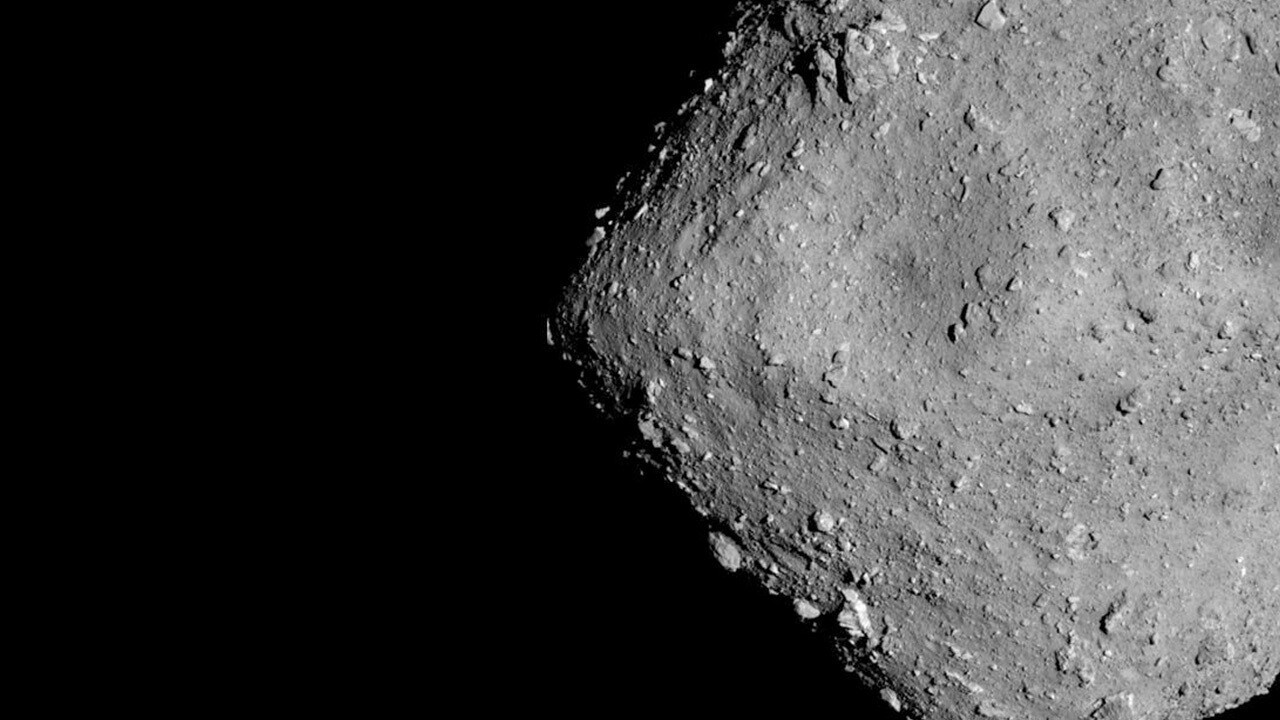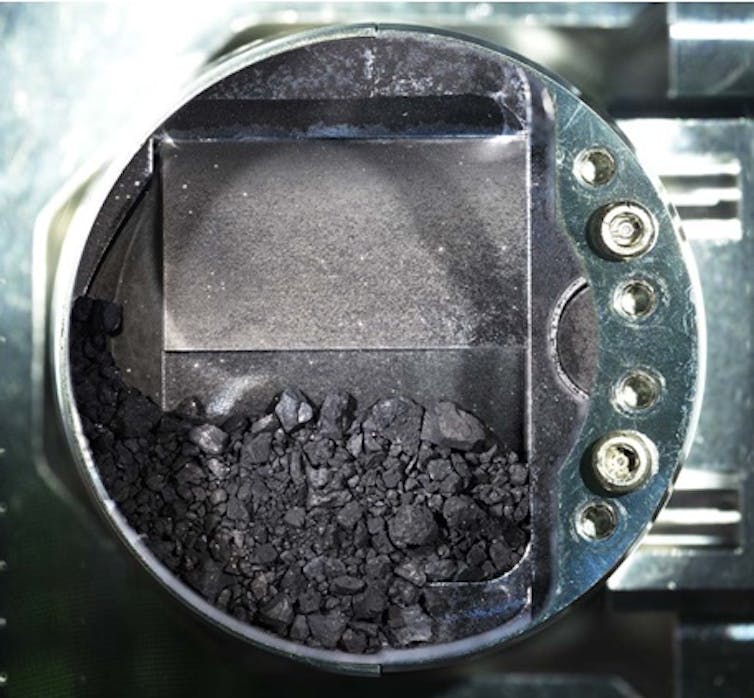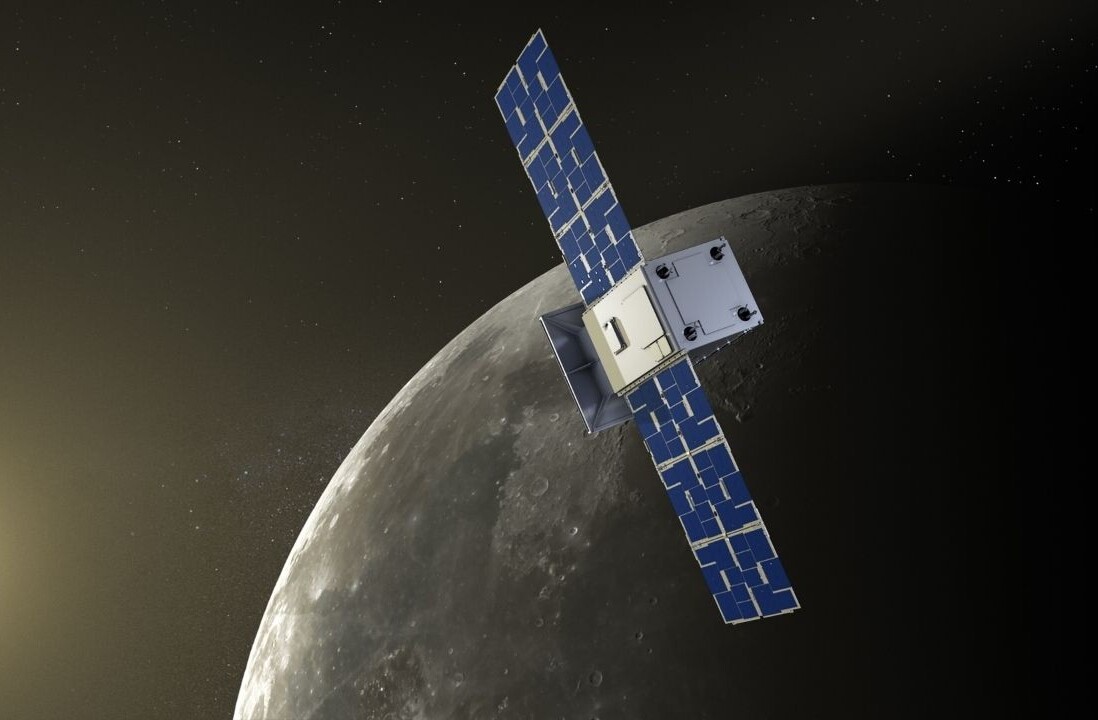Just over 12 months ago, we were sitting at Woomera, in the Australian outback, waiting for a streak of light in the sky to testify that the Hayabusa2 spacecraft had returned from its voyage to collect a little piece of a near-Earth asteroid called Ryugu. Unfortunately for us, it was cloudy in Woomera that day and we didn’t see the spacecraft come in.
But that was the only imperfection we saw in the return. We found and retrieved Hayabusa2, brought it back to Woomera, cleaned and examined it.
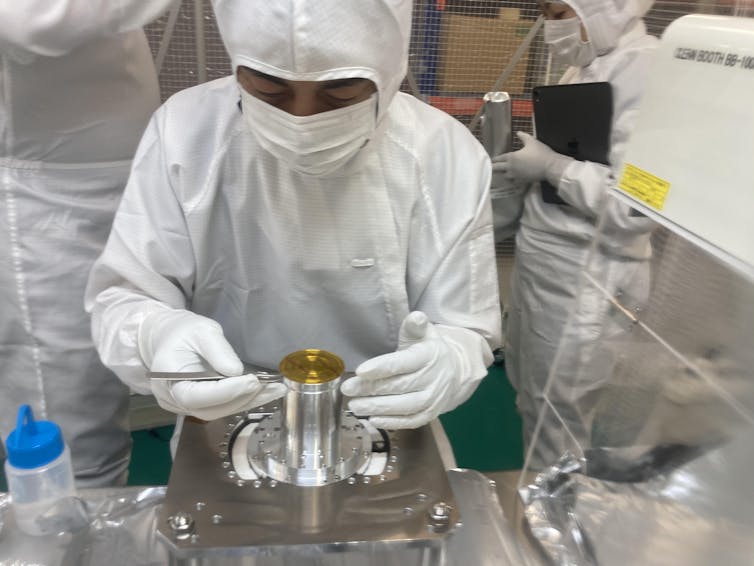
The sample capsule was removed from the spacecraft. It was in good shape, it had not exceeded 60℃ on reentry, and the capsule rattled when it was turned over, suggesting we did indeed have a solid sample. Its vacuum had been maintained, allowing whatever gases had been released from the asteroid sample to be collected, and a preliminary analysis of these was carried out in Woomera.
A year down the track, we know a lot more about that sample. In the past month, three papers have now been published concerning the first analysis of the Ryugu samples, including an article in Science this week concerning the relationship between the material seen at the asteroid, and the sample returned to Earth.
These observations open a window into the formation of the Solar System and helps to clear up a meteorite mystery that has puzzled scientists for decades.
Fragile fragments
All up, the sample weighs about 5 grams, split between the two touchdown sites that were sampled.
The first sample came from Ryugu’s exposed surface. To get the second sample, the spacecraft fired a small disk at the asteroid to make a little crater, then collected a sample near the crater in the hope this second sample would contain material from below the surface, shielded from space weathering.
The touchdown sampling was recorded by video cameras on board Hayabusa2. Through detailed analysis of the video, we have found the shapes of the particles ejected from Ryugu during the touchdowns are very similar to the particles retrieved from the sample capsule. This suggests both samples are indeed representative of the surface – the second may also contain some subsurface material, but we don’t yet know.
Back in the laboratory, we can see that these samples are extremely fragile and have very low density, which indicates they are quite porous. They have the constitution of clay, and they behave like it.
The Ryugu samples are also very dark in color. In fact, they are darker than any meteorite sample ever recovered. The in situ observations at Ryugu indicated this as well.
But now we have a rock in hand and we can examine it and get the details of what it is.
A meteorite mystery
The Solar System is full of asteroids: chunks of rock much smaller than a planet. By looking at asteroids through telescopes and analyzing the spectrum of light they reflect, we can classify most of them into three groups: C-type (which contain a lot of carbon), M-type (which contain a lot of metals), and S-type (which contain a lot of silica).
When an asteroid’s orbit brings it into a collision with Earth, depending on how big it is, we might see it as a meteor (a shooting star) streaking across the sky as it burns up in the atmosphere. If some of the asteroid survives to reach the ground, we might find the remaining piece of rock later: these are called meteorites.
Most of the asteroids we see orbiting the Sun are the dark-colored C-types. Based on their spectrum, C-types seem very similar in makeup to a kind of meteorite called carbonaceous chondrites. These meteorites are rich in organic and volatile compounds such as amino acids and may have been the source of the seed proteins for making life on Earth.
However, while around 75% of asteroids are C-types, only 5% of meteorites are carbonaceous chondrites. Until now this has been a conundrum: if C-types are so common, why aren’t we seeing their remains as meteorites on Earth?
The observations and samples from Ryugu have solved this mystery.
The Ryugu samples (and presumably meteorites from other C-type asteroids) are too fragile to survive entering Earth’s atmosphere. If they arrived traveling at more than 15 kilometers per second, which is typical for meteors, they would shatter and burn up long before reaching the ground.
The dawn of the Solar System
But the Ryugu samples are even more intriguing than that. The material resembles a rare subclass of carbonaceous chondrite called CI, where C is carbonaceous and the I refers to the Ivuna meteorite found in Tanzania in 1938.
These meteorites are part of the chondrite clan, but they have very few of the defining particles called chondrules, round grains of predominantly olivine apparently crystallized from molten droplets. The CI meteorites are dark, uniform, and fine-grained.
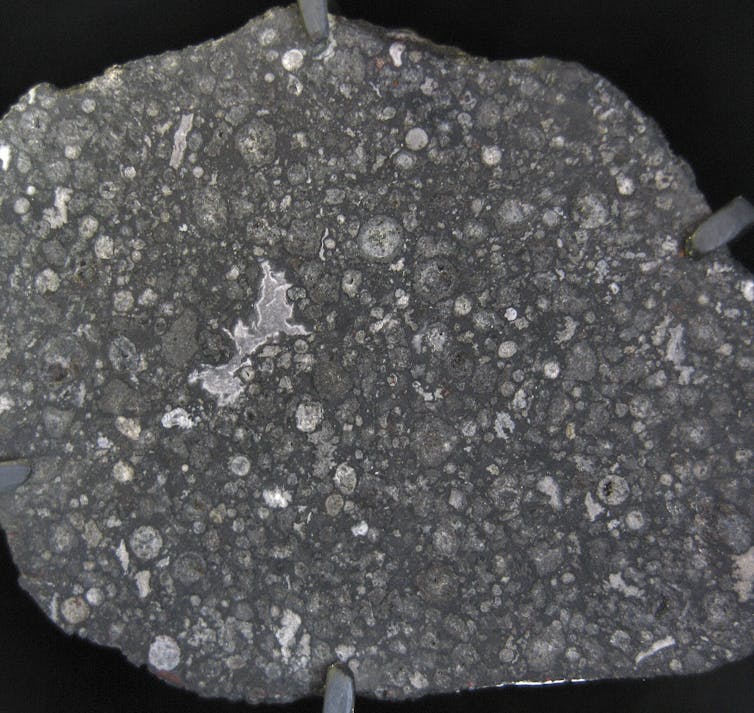
These meteorites are unique in being made up of the same elements as the Sun, and in the same proportions (besides the elements that are normally gases). We think this is because CI chondrites formed in the cloud of dust and gas that eventually collapsed to form the Sun and the rest of the Solar System.
But unlike rocks on Earth, where 4.5 billion years of geological processing have changed the proportions of elements we see in the crust, CI chondrites are largely pristine samples of the planetary building blocks of our solar system.
No more than 10 CI chondrites have ever been recovered on Earth, with a total known weight of less than 20kg. These objects are rarer than samples of Mars in our collections.
What are the chances, then, of the first C-type asteroid we visit being so similar to one of the rarest kinds of meteorite?
It is likely the rarity of these CI meteorites on Earth is indeed related to their fragility. They would have a hard time surviving the trip through the atmosphere, and if they did reach the surface the first rainstorm would turn them into puddles of mud.
Asteroid missions such as Hayabusa2, its precursor Hayabusa, and NASA’s Osiris-REx, are gradually filling in some blanks in our knowledge of asteroids. By bringing samples back to Earth, they allow us to look back into the history of these objects, and back to the formation of the Solar System itself.![]()
Article by Trevor Ireland, Professor, The University of Queensland
This article is republished from The Conversation under a Creative Commons license. Read the original article.
Get the TNW newsletter
Get the most important tech news in your inbox each week.
